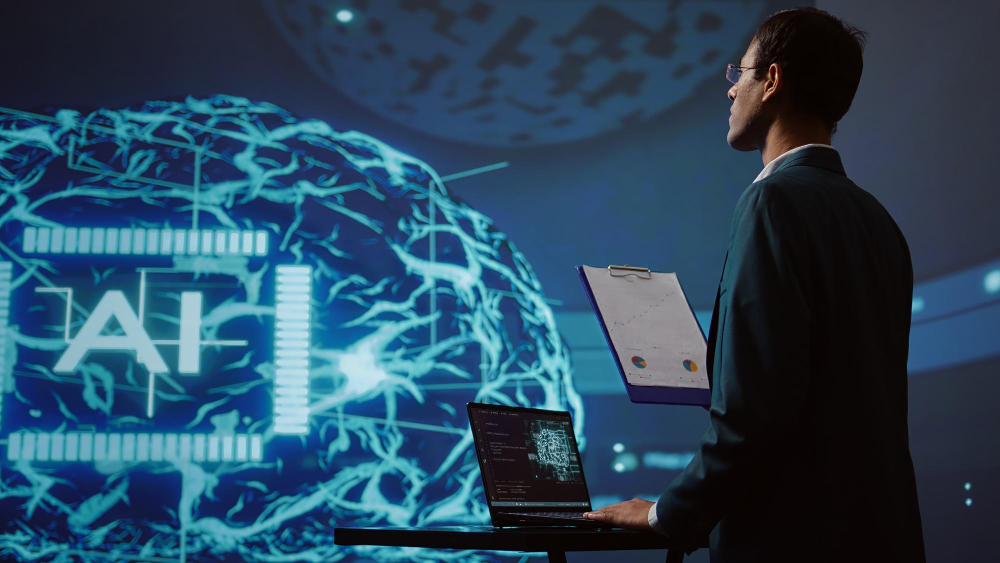Introduction
What is Ethical AI?
Ethical AI is the creation and implementation of artificial intelligence systems through practices that reflect fairness, transparency, accountability, and inclusiveness.
The use of such artificial intelligence systems ensures limited harm, and it ensures that technology is for all societal members, with no race, gender, socioeconomic background, sexual orientation, or other identity factors distinguishing them.
The Necessity of BIAS and Fairness in AI
An area where AI has raised much attention on issues of bias and fairness - very prominent in algorithms for whom to interview, facial recognition software, loan approval systems.
Biased AI continues societal inequalities and perpetuates injustice, exclusion, and mistrust of the technology.
Therefore, a comprehensive approach to the issue of fairness in AI becomes crucial for building a technology system that treats everyone equally and does not continue to play out existing historical injustices.
Purpose and Scope of the Article
We will discuss some contemporary works on the issues of bias and fairness in machine learning models, and on the trend of the times toward ethical AI.
We'll have a go at different kinds of bias liable to creep into AI systems, the concepts defining human rights and chasing down fairness in machine learning, and tools and techniques for building more equitable AI models.
We conclude with some challenges to the attainment of ethical AI and discuss future scope scientific research in this area.
Understanding Bias in AI and Machine Learning models
What is Bias?
Bias in AI refers to systematic errors or unfair outcomes when the learning models reflect prejudices or imbalances existing in their training data or in the algorithms itself. There are several types of bias in AI:
- Algorithmic Bias: Algorithm bias arises when the same algorithm in machine learning has resulted in unfair or biased outcomes because of the inherent flaws in the design of the model or decisions taken in the developing phase of the model.
- Data Bias: It occurs because of the inefficient, incomplete or non-representative data set aimed to develop and train an AI model. Where a set of demographics might be underrepresented or misrepresented, an AI winds up harming such groups more.
Societal Bias Societal biases are biases derived from larger social and cultural contexts within which data is generated. Such biases could be integral to AI systems that create them that reflect historical discrimination, stereotypes, or existing inequalities.

Examples of Bias in AI Applications
Bias in AI has already found its presence in many real-world applications. Facial recognition technologies proved less accurate for the identification of darker-skinned individuals.
Similarly, algorithms concerning hiring tend to be biased against women and less towards men because of a machine learning process based on historical data that display gender imbalances in a specific industry.
Origins of Bias
Bias can emerge in AI systems from any one of the following sources:
- Data Collection and Representation: This problem can also be regarded from the perspective of the data itself to be trained by the ML model as incomplete, skewing, or deficient.
As a result, a model trained on poorly represented data might learn decisions that mirror the biases present in such data sources, such as the failure of a healthcare AI system to function when applied to a patient population sampled from rural establishments, even though it has been mainly trained on data from urban hospitals.
- Biases of the People Building and Deploying Models: The algorithm can imbibe accidental human biases from the research, training and deployment process of AI. Decisions of which features or values to select, how data should be categorized, or what type of outcome is most valued endow bias.
Effects of Bias in AI
Let's see how the bias in the AI models affects the outcome:
Discrimination and Inequity: It is common that biased AI deters the fair outcomes and outcomes such as rejecting the loan applications and applicants unfairly or failing to hire due to bias or even when wrongly accusing a person during police investigations. The system only widens and focuses on the most vulnerable populations in society.
It has also heightened legal and other ethical concerns and implications in that biased AI systems are being deployed. Such biased AI systems could lead to legal suits against companies and institutions that had such biases deployed due to discrimination, among others. The use of such biased AI systems leads to questions of fairness, justice process data others, privacy safeguards and accountability.
Fairness in machine learning models
Fairness in AI should mean that no AI system should be biased in favor of or against specific individuals or groups in making decisions.
In this regard, making definitions for the importance of fairness in machine learning research is particularly difficult because proper fairness criteria can vary so much with the context. Some common fairness criteria include:
• Demographic Parity: Equitable distribution of outcomes among the different demographic groups.
• Demographic Parity: There should be an equal opportunity for members of various demographic groups, if they have the same qualification or attributes, to receive a desirable outcome.
• Calibrated Fairness: Algorithms designed such that they openly use protected attributes; say, race, gender-for rectifying bias against them rather than excluding these factors.

Trade-offs Between Different Definitions of Fairness
Fairness is probably going to come at some cost of trade-offs-for example, emphasis on demographic parity may result in disparate individual outcomes whereas an equal opportunity approach will give better treatment to some groups than others to extract from them some historic inequality. For a given AI system, fairness needs to be defined depending upon context and purpose.
Why Fairness Matters in AI
The reasons fairness matters in AI include:
Trust and Credibility: In order for AI systems to be trusted, they must be mostly transparent, fair, and non-discriminatory. If people think an AI system is discriminative or biased, they may refrain from using the system altogether.
- Societal and Community Harm: Because decisions in healthcare, education, health care, and criminal justice systems made by high-stakes AI systems often impact society and affected communities, ensuring fairness in the decision making and of such AI-decision systems is crucial so that the most vulnerable segments of society are not harmed or kept out of the potential benefits realized from technological development.
Ethical AI and Overcoming Bias and Promoting Fairness
Ethical AI Principles
Basic guidelines for designing ethical AI systems involve ethics:
Transparency: AI must be transparent about the process followed by it to reach a particular algorithmic decision making. The end-users should know how the AI model arrives at a particular conclusion and should be permitted to audit it for fairness.
Developers and organizations deploying AI systems have a responsibility for the outcomes. If there exists emerging bias non discrimination or unfairness, it has to be addressed and corrected.
Inclusivity: Ethical AI should be developed with the inputs of people who would likely be most affected by the technology. Inclusivity refers to the process of ensuring that AI and its systems in some way reflect different groups with ethical concerns too.
Reducing Bias Techniques
There exist several techniques that can counter bias in AI systems.
Techniques for bias detection and measurement: these can be applied by the developer before deployment of an AI system to detect biases that already exist in the predictions of the model through application of statistical methods.
Such techniques identify disparities about the values and way the model treats different demographic groups.
Preprocessing: This is a form of addressing bias before training the model by adjusting the training data used to make it more representative of the target population.
- In-Processing: Techniques can be added to the training of the model by changing the algorithm itself to make its result more fair.
- Post-Processing: After the training of a model is done, the outputs are adjusted so that there might be no remaining bias.
Case Studies of Successful Ethical AI Implementations
Various successful applications of certain types of ethical AI have been found in different industries:
Healthcare: A hospital had created an AI system to assist in diagnosing patients. The hospital made sure that the system would not produce biases because they had gathered a mixed dataset of data from different individuals coming from different socio-economic backgrounds and different areas.
- Hiring: A company had already started deploying AI on its hiring process of employees. For it would already have gender and racial biases in selecting whom to hire, the company established machine learning algorithms conscious of fairness, making the hiring processes fair.
- Finance: A financial organization decreased bias in its loan approval process using transparency tools that allowed stakeholders the ability to audit the decisions of the model and thus fair lending practices.

Tools and Techniques for Building Fair AI Systems
Data Diversity and Representation
The most significant features of just AI systems will be that training data is both representative and distributed over the population. Strategies for diverse dataset collection :
The source of the data should belong to different geographical areas, socio-economic backgrounds, and demographics .
Proactively seek out underrepresented groups not to inadvertently marginalize specific populations.
Algorithmic Techniques for Fairness
Another approach is the use of fairness-sensitive machine learning algorithms that are specifically designed to minimize inequality between disparate demographic groups. In other words, these algorithms have fairness constraints that are enforced during training such that the model makes outcomes fairly.
The third means of checking whether a given model is treating different groups fairly is via the use of evaluation metrics meant to measure fairness, including demographic parity and equalized odds metrics.
Governance and Regulatory Frameworks
Governance structures ensure businesses are held accountable to these standards with regard to ethics and fairness in new technologies.
The regulatory bodies begin constructing guidelines on the aspect of fairness with regard to AI, and companies begin implementing internal frameworks of governance that oversee the development and deployment of ethical AI systems.
Challenges in Achieving Ethical AI
Technical Limitations
There is no clear and quantifiable definition of fairness; hence, it is hard to design an ethical AI. The conflicting criteria for defining fairness also are quite possible and it means that the one-size-fits-all solution does not exist and therefore one method or the other may be followed depending upon specific criteria.
In addition, attempts at adjusting and reducing bias through algorithms may also lead to unintended consequences for other reasons related to fairness balanced with model performance.
Cultural and Organizational Resistance to Change
Another significant resistance to deal with is the cultural as well as organizational resistance to technological change. Most firms hold the motto of making profits as well as being efficient, and there is no good outlook for fairness measures since these rapid changes might absorb more resources or delay timelines in developing.
Monitoring and Accountability
In order to achieve ai algorithms for this, the AI systems need constant auditing over time to ensure that they remain fair. Changes in data patterns, user behavior, or even societal conditions can evoke new biases, hence the need for continued monitoring and accountability mechanisms on ethical AI for detecting and adjusting whenever it is necessary.

The Future of Ethical AI
Greater awareness, and even public outcry, is propelling the demand for greater ethical AI solutions. Governments are not lagging behind either, guiding and providing frameworks for "fair and responsible" AI development.
Predictions about AI and Society
We will see much more potential in the development risk assessment of the fairness of AI systems in the industries involved as more ethical AI develops. Researchers, policymakers, and impacted communities will need to collaborate to ensure AI develops in ways that are beneficial to all sections equitably.
In Summary, what we think
There is much more potential for development in the fairness of the involved industries in the improvement of AI systems, where more ethical AI is developed.
Interdisciplinary collaboration involving researchers, policymakers, and impacted communities will be crucial to ensure AI develops in ways that benefit all sections equitably.
Such ethical considerations on the design and development of AI systems should be based on transparency, accountability, and inclusivity to limit discrimination and ensure equitable outcomes.
Some efforts include improving data diversity, using fairness-aware algorithms, and ensuring robust governance. Therefore, innovation and collaboration will now center AI ethics in this ever-changing discipline as it continues to seek out and create a discriminatory and bias-free world where the benefits of science can be represented by AI for everybody.